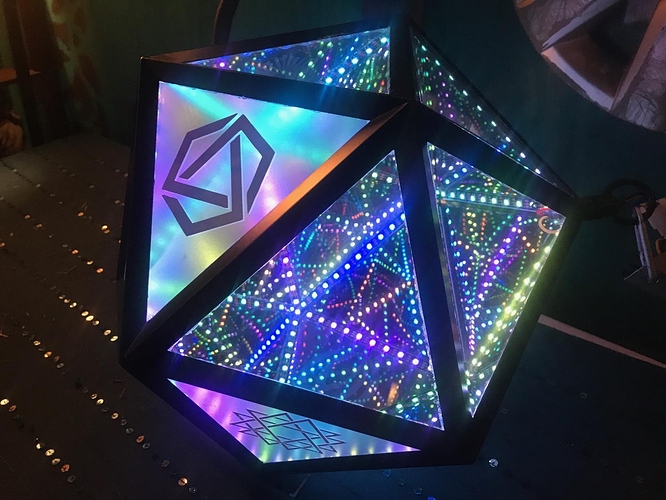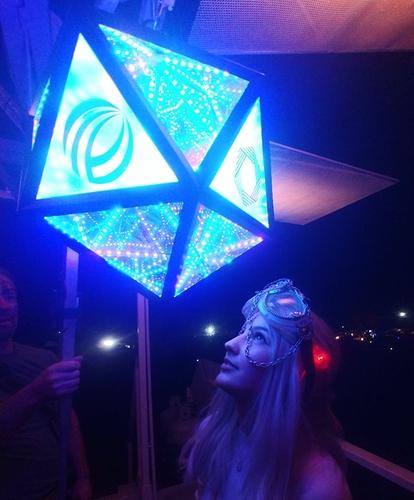I built an icosahedron infinity mirror (I named him Wilson, after the volleyball in the movie Castaway), it has LED’s along all the inside edges, ~13" in diameter and 2-way mirrors on every face. I commonly mount him on a lantern pole and do roving art at music festivals for fun.
I also plan on constructing other shapes with straight edges and flat sides, not necessarily symmetric, not necessarily convex (stellated, for example), various sizes, various optics… imagine a sculpture garden of infinity mirrors, or a mobile with various infinity mirrors hanging from them…and I’m trying to think ahead on how I might systematically arrange the addresses (balanced against wiring symplicity) and 3D map them. And, thinking about what I could do with that mapping…
I took the following vid at Burning Man of someone’s dome, which gives me some ideas (no idea who made it or how).
If this is a solved problem, or someone wants to collaborate on a cool non-monetized art project, I’m open.
Also, any thoughts on considerations for LED choice, other than the common WS2812B? (WS2812B look good on Wilson, having experienced nothing else)
-I don’t see persistence of vision ever being desired.
-Wilson has 360 LED’s, some will be less, some will be 2x,3x or more.
-Some effects, like sound-reactive, sparse patterns and “soul capturing flashes” are great when bright… But many modes look best at really low brightness. With your face right up to it, high brightness can blow out the eyes and the volume develops a white glow from the scattering imperfections, which diminishes the black void effect. (huge strike against 12V addressable, which draw constant current even at low luminance), I’ve read the SK9822 (and the APA102 somewhat) have advantages at low brightness.
-Some designs will enjoy the aesthetics of skinny strips and/or higher densities (90,120,144 led/m).
-Cost is some consideration
-Redundancy is not a consideration, if an LED goes out, I’ll pop a panel and repair it
-4-pin is inconvenient, it means a ground strap/something with 3-pin MT30 or MT60 connectors (or dual connectors), and complicates node wiring and possible swivel design.
-Any favorite sources/brands for LED strips? I’m familiar with Amazon (BTF, Chinly, Alitove), Sparkfun and Adafruit (Adafruit seems expensive).



 I remember reading something about it in the LEDs are Awesome facebook group, but I don’t have a link saved.
I remember reading something about it in the LEDs are Awesome facebook group, but I don’t have a link saved.